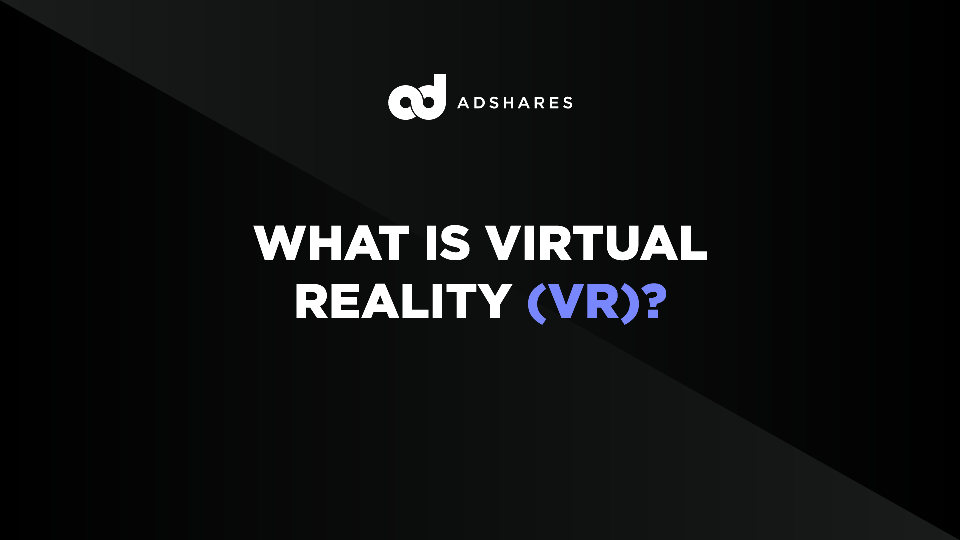If you haven’t been living under the rock, you must have heard about VR and how it’s revolutionising the tech world like never before. Have you ever wondered how a VR headset can make you feel like flying in the sky while you are simply lounging on your couch? Honestly, VR is an innovative technology. With each passing day, the VR innovators and developers are constantly discovering new VR opportunities in the media, and it’s changing the way we are feeling and seeing things and how we hear our surroundings.
Similarly, VR headsets are constantly growing and are shaping into the digitised landscape (do you know that by the end of 2021, more than 58 million will be using virtual reality technologies?). So, if you are still new to this technology, we are sharing the introduction to virtual reality and how virtual reality really works. Are you ready to dive into this immersive world, then?
What Is VR (Virtual Reality)?
Virtual reality is a popular technology that’s known to simulate the vision and make you end up in a 3D environment where users can immerse, experience the 3D world, or simply browse through it. The 3D environment is controlled in three-dimension by the users experiencing it. On one hand, the users create the 3D virtual reality environment, while on the other hand, the user explores and experience the 3D environment with suitable devices, including VR headsets.
In addition, some VR devices allow the users to control the content and explore it (hint: we are talking about VR controllers). However, content development asks for the basic concept of computer vision, which enables computers and phones to process videos and images. It makes it easier to understand the content, just as a human visual system would do. For instance, the devices with VR technology will interpret the videos and images through image surroundings, location, and appearance.
It means that the devices use camera but integrate other technologies, such as Big Data and Artificial Intelligence. As far as AI and machine learning are concerned, they depend on pre-processed video and image data to identify the objects within the ecosystem. The cameras utilize blob detection, edge detection, template matching, scale space, and a combination of all these to make virtual reality a reality.
How Does Virtual Reality Work?
VR is likely to hit the mark of $184.66 billion by the year 2026, making it one of the fastest-growing technologies in the tech world. It wouldn’t be wrong to say that it has excited customers all around the world. Similarly, virtual reality is becoming more popular in businesses and homes and stimulates the environment sand setting that’s realistic enough to let us think we are in a different place. The primary purpose of the VR headset is to transmit you to a different version of reality, where it’s possible to interact with other environments.
Being humans, we often base our perception on the rules developed by our personal experiences, and we believe that we feel, hear, and see around us. The VR designers are using the basic ideas and rules of perception of how humans interact with the world to curate environments that are equally realistic and authentic as the real world. As far as the VR headsets are concerned, they are basically the machines designed to replace the real surroundings with something created with the software.
Moreover, the headsets are integrated with magnetometers, accelerators, and gyroscopic sensors to determine how humans will move and track the interactions within the virtual world. It also connects to external computer systems and cameras to access software to stream the VR experience or connect with other programs.
Virtual reality processing is a combination of software and hardware. The hardware is utilized for viewing while software is used for creating the environment. For instance, games are a perfect example of VR technology with which the headgear is attached to the HDMI cables and transfers images from the box. As a result, you are enabled to play tennis with your friends while being at home. Also, there are instances when phones become an essential part of the hardware, such as smartphones getting clipped in the VR headset and projecting images. However, the smartphone needs to have at least 60fps or higher framerate to ensure crisp images and prevent pixelation.
Who Can Use Virtual Reality?
Honestly, it completely depends on the needs. This is because some people use it for gaming, while some use it for attending virtual conferences, providing training, and hanging out at events or meetings. If you are a consumer, you need to think you need to consider the right type of VR headset to purchase. For instance, do you want the VR headset to work with a PC or your smartphone? Do you need to download content for offline usage or access it online?
To illustrate, if you are an institute or a company wanting to use virtual reality and its immersive benefits for training and advertising, you need to create VR content that influences the target audience. in addition, it’s possible to create a VR app for the company, the one that works on non-PC, PC, and every smartphone (Android, iOS, and others). The app can be loaded with VR ads and content that customers can explore and watch. Moreover, you can also design and launch the VR headset!
However, while developing content for VR, you need to purchase VR headsets that can support different development tools and SDK. Also, make sure that you’ve a strong grip on the right platforms and standards that are used for developing virtual reality.
Application Of Virtual Reality
Virtual Reality seems like a new advancement, but it has been around for quite some time now, making it a foundation for hundreds of applications. Some of the common applications of VR include;
- Gaming — it’s used to play the immersion games
- Workplace collaboration — it allows the workforce to collaborate on the projects remotely, which makes it suitable for demo tasks where visuals and images are essential for completing the tasks
- Pain management — it helps distract the patients and confuses the pain pathways to reduce the pain, which eventually soothes the patients
- Learning & training — it is suitable for demonstration and providing a demo of the surgical procedures to ensure trainees and residents have enough experience
- PTSD treatment — PTSD is extremely common in veterans and soldiers, and other people who undergo traumatic experiences. Having said that, VR can be used to revitalize their experience and help medical experts understand the underlying conditions and create ways of fixing the problems
- Autism management — it helps improve brain activity and their perception of images. In addition, it introduces autistic people to various social scenarios and providing training regarding suitable response
- Paraplegics therapy — it allows the paraplegics to experience different environments, irrespective of their physical limitations. In addition, it has helped paraplegics improve control over the limbs
- Social disorder management & treatment — it can be applied for monitoring the anxiety symptoms, including panic attacks and breathing patterns. Even more, it helps therapists select the appropriate anxiety medication
- Advertising — it helps create immersive ads that add value to the marketing campaigns
- Leisure — it can be applied to the tourism industry to provide virtual tours of different travel destination, so travelers can purchase plane tickets accordingly
- Military training — it helps simulate a variety of situations that helps train the military soldiers according to different war situations
VR Hardware & Software
The VR hardware is designed to create stimuli for manipulating the user’s sensors of the VR. The hardware can be worn on the body or can be used separately while being physically away. The hardware is designed with sensors for tracking motions and has receptors to gather mechanical energy from the body. The sensors will convert the energy to electrical signals, which are fed into the device or computer for making actions.
On the other hand, the software will manage the output and input devices, interpret the incoming data, and create feedback. However, it requires the input to be on time and output to be prompt. Also, the software can relay the VR-based content from the internet and cloud to ensure seamless content management. As far as VR audio is concerned, the 3D illusion is created with the help of multi-speaker and positional audio to ensure proper information delivery (the audio technology has become more common in sound systems).
The Bottom Line
To summarize, we dived deeper into the intricacies of virtual reality, its processing, and how a combination of hardware and software impacts the entire experience. It wouldn’t be wrong to say that VR is simply a computer-generated ecosystem with objects and systems that look real, making users feel that they are immersed in a new environment while being in their real place — isn’t that cool?




